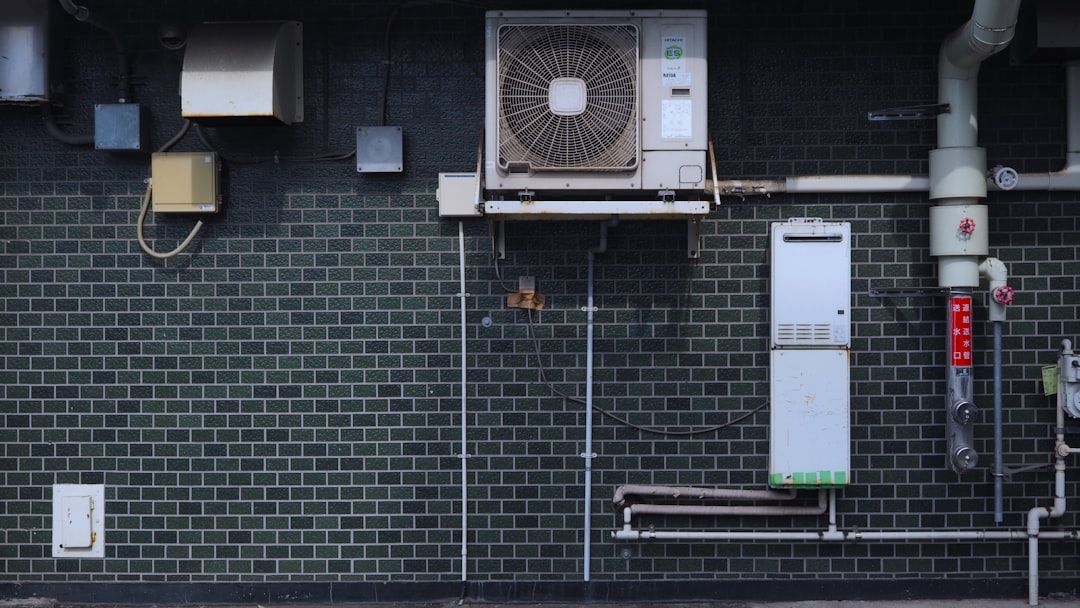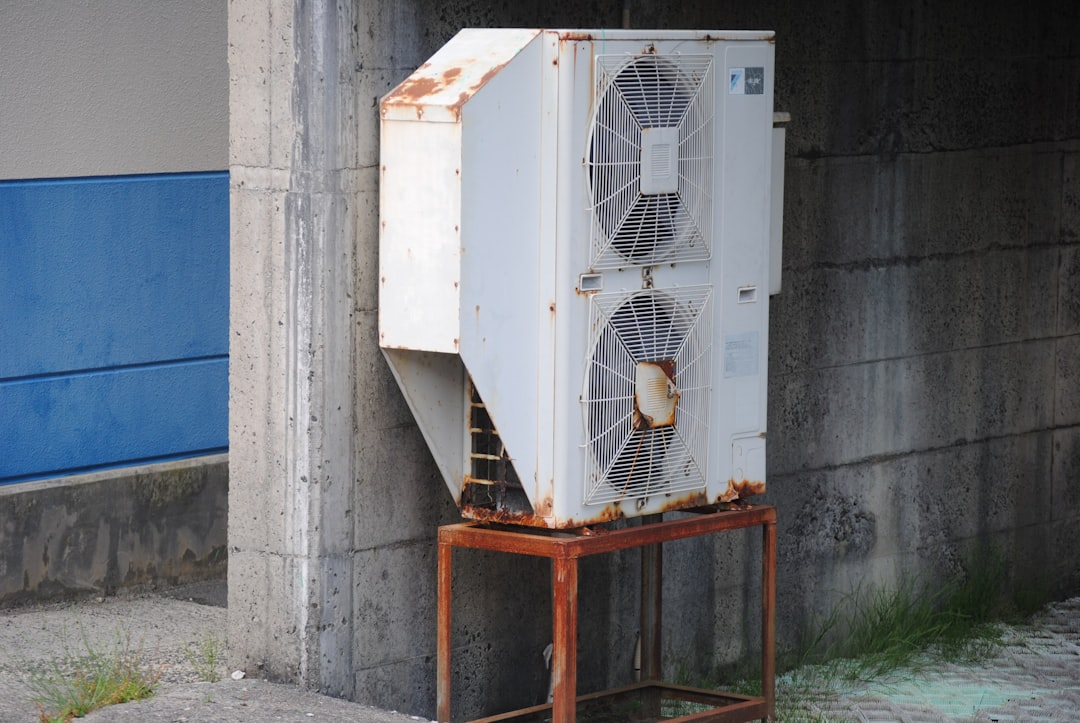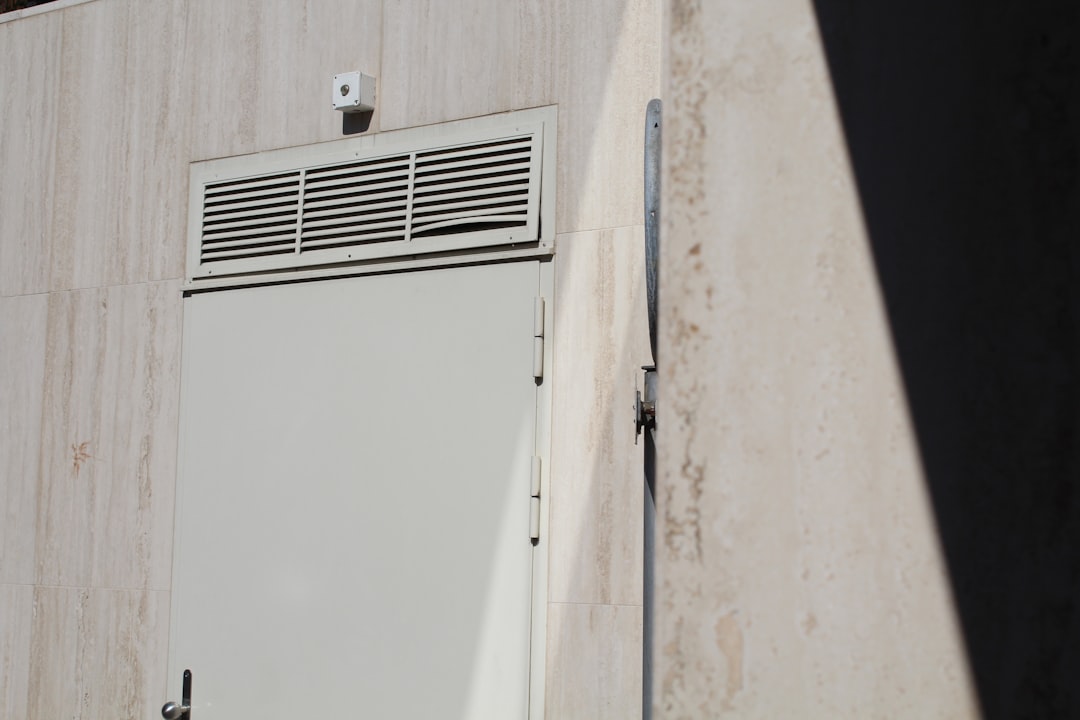

Engage prospects with a scan and streamline customer engagement with FREE QR code marketing tools by Sona – no strings attached!
Create a Free QR CodeFree consultation

No commitment

Engage prospects with a scan and streamline customer engagement with FREE QR code marketing tools by Sona – no strings attached!
Create a Free QR CodeFree consultation

No commitment
Commercial air conditioning repair services face increasing pressure to streamline operations, respond more rapidly, and deliver a seamless experience for both clients and technicians. Outdated workflows—such as paper orders and wall-mounted instructions—impede efficiency, introduce errors, and hinder effective data collection. The result is missed opportunities for informed decision-making and targeted engagement.
Forward-thinking commercial HVAC companies are now bridging the physical and digital worlds using QR codes, as outlined in Sona QR’s HVAC guide. QR codes enable instant access to service manuals, maintenance checklists, and warranty forms directly at the point of need, eliminating delays caused by outdated or hard-to-find documentation. With every scan, even previously anonymous or undecided prospects become visible and actionable leads.
By embedding QR codes on equipment, service labels, or printed materials, commercial air conditioning repair providers simplify workflows, promote continual knowledge sharing, and enable data-driven follow-ups. This approach improves operational efficiency and ensures valuable customer interactions are captured, allowing for timely follow-up and unlocking new upsell opportunities.

Commercial air conditioning repair providers frequently contend with sluggish on-site troubleshooting, inconsistent documentation, and a lack of visibility into technician or customer behaviors—issues that directly impact client satisfaction and profitability. QR codes bridge these gaps, making it significantly easier to guide field teams and capture valuable data without manual effort. By replacing analog materials with scannable gateways, you deliver the right resource at the moment of need and remove guesswork from field service.
Think of every QR code as a micro-portal: technicians scan to access updated manuals, videos, and schematics; customers scan to register warranties or submit service requests. Each interaction produces trackable signals that flow into your CRM and analytics tools, as covered in Sona QR’s product overview. Over time, these signals reveal where delays occur, which assets drive the most service calls, and which customer segments are most responsive to maintenance plans or upgrades.
Traditionally, these pain points result in lost leads, unconverted demo interest, and missed revenue due to fragmented processes and limited follow-through. QR code-based workflows allow organizations to close the information loop, support field teams at scale, and ensure no potential opportunity slips through unnoticed. With solutions such as Sona QR, every physical asset becomes a gateway to efficiency, accountability, and growth.

QR codes address perennial pain points for commercial HVAC field teams and operators. They remove friction between physical assets and digital resources, enable instant data capture, and deliver trackable interactions at key moments. From rooftop units to maintenance paperwork, QR codes convert offline interest and actions into measurable outcomes. See HVACR QR uses.
For commercial HVAC organizations, the benefits map neatly to operational and revenue goals: faster time to resolution, higher first-visit fix rates, improved training and cross-team consistency, richer customer insights, and more efficient capture of leads and reviews. When QR codes are paired with a centralized platform like Sona QR’s use case library, teams also gain the flexibility to update destinations after printing and the visibility to attribute revenue to specific offline touchpoints.
Integrating QR codes into repair workflows and customer communications helps organizations shift from reactive firefighting to proactive, data-driven field service. The result is a service model in which every engagement is trackable, actionable, and aligned with business goals, from compliance and safety to recurring revenue.

Selecting the right QR code format eliminates technical bottlenecks and simplifies daily workflows in busy HVAC environments. Because field conditions vary, technicians need scannable, reliable access to resources through formats that match each task, whether it is calling for urgent help, downloading an app, or submitting a warranty form. The right choice keeps operations moving and customers informed.
Dynamic codes add further flexibility as destinations can be updated without reprinting. This is ideal for evolving maintenance protocols, seasonal promotions, or safety updates. Static codes serve well for stable, evergreen resources such as a general installation manual or a public product page.
Modern QR management platforms such as Sona QR make it easy to deploy both dynamic and static codes, assign UTM parameters, and track performance. Whichever format you choose, tie it to an objective metric such as reduced mean time to repair, higher form completion rates, or increased customer review volume.

Unlocking new growth begins by placing QR codes where they solve clear pain points for technicians and customers. When QR codes are positioned at the moments of decision or need, they transform confusion into clarity and interest into action. Think in terms of high-friction tasks such as finding the right manual or registering a warranty, then make those actions one scan away.
Prioritize placements that consolidate information, shorten workflows, and create attributable data. Over time, your best-performing placements will become visible in analytics, allowing you to double down on channels that generate service requests, feedback, or renewals.
By aligning QR placements with operational bottlenecks and peak interest moments, you not only boost efficiency but also gain a clearer view of your pipeline. Your marketing team can attribute net-new and recurring revenue to specific physical touchpoints and scale those that perform.
Commercial HVAC companies commonly miss high-intent signals and endure preventable delays due to fragmented field intelligence. QR code-driven tactics address these blind spots by routing every scan to the next best action and logging context that would otherwise go untracked. Start with a few core use cases that impact speed, safety, and customer satisfaction.
As you deploy, choose dynamic codes for assets that will evolve, such as training materials or protocol updates, and static codes for evergreen items, such as a public equipment overview. Ensure every use case has a matching success metric so you can prove value to operations and finance stakeholders.
By transforming everyday touchpoints into data-rich, actionable interactions, QR codes empower organizations to surface hidden engagement, address customer needs rapidly, and keep field documentation aligned with real business demand.
Many commercial air conditioning repair services struggle with disconnected campaigns and limited visibility into true prospect behavior. QR code scans produce granular, intent-rich data that can be transformed into segmented audiences for precise retargeting and sales follow-up. Instead of guessing who is ready for a maintenance contract or an upgrade, you will know based on what they scanned and when.
The key is to deploy different QR codes across the lifecycle, then tag each scan by use case, location, and timing. A scan that loads an emergency service request at 2 a.m. signals a different need than a scan of a maintenance plan brochure during business hours. Feed those distinctions into your CRM and marketing tools so each audience receives relevant outreach. Use Sona’s retargeting playbook to operationalize these segments.
With advanced management through Sona QR, every engagement becomes a measurable opportunity to drive growth. You can eliminate waste, prioritize high-value accounts, and ensure that no promising prospect is overlooked due to incomplete tracking.
Commercial HVAC providers often suffer from fragmented experiences because online and offline efforts are not connected. QR codes bind these channels together so every technician and customer action flows into an integrated data strategy. Whether the scan happens on a rooftop unit, a service van, or a mailed renewal notice, it becomes part of a unified funnel. See this QR engagement video.
A centralized platform helps you manage code design, destinations, and analytics across all media. This closes the loop on marketing attribution and improves customer experience. As you connect channels, keep CTAs consistent and benefit-focused so scanners know exactly what to expect.
By managing QR interactions in one place, every scan is tracked, attributed, and synchronized with your CRM and analytics. That ensures seamless follow-up, personalized messaging, and a unified brand experience across channels and teams.
A well-planned QR campaign converts scans into measurable outcomes. Use the following steps to go from idea to impact while avoiding common pitfalls like poor placement or unclear calls to action.
Start creating QR codes for free: Start creating QR codes for free
This checklist helps transform QR adoption from a one-off tactic into a systematized workflow multiplier. Over time, you will build a data flywheel in which every scan improves the next deployment and informs smarter operational decisions.
Commercial HVAC organizations often lack visibility into how offline interactions translate into pipeline and revenue. Without robust tracking, it is difficult to justify investments or optimize field strategy. Linking QR codes to analytics changes that by tying each scan to a specific asset, campaign, or event, then connecting outcomes such as bookings or renewals to those origins. For frameworks, see offline attribution guide.
A practical analytics setup begins with dynamic codes that include UTM parameters and a centralized dashboard. From there, you can inspect performance by time, place, and device, then route hot signals directly to dispatch or sales. The result is a unified view from first scan to closed revenue.
With Sona QR for capture and Sona.com for identity resolution and multi-touch attribution, you can connect anonymous scans to known buyers, sync data to HubSpot or Salesforce, and optimize in real time. QR codes then become a core pillar of performance measurement rather than a novelty.
Much of the efficiency and revenue loss comes from generic field campaigns and underdeveloped data capture. A few strategic adjustments can make your QR program transformative. Focus on granular attribution, automation, and staff adoption to maximize both scan volume and post-scan outcomes.
As you scale, treat QR content as a living asset. Update pages and forms based on feedback, seasonality, and regulatory changes. Make sure the promise on the sticker or invoice matches the value delivered after the scan so technicians and customers continue to trust and use the experience.
By implementing these tips, QR codes evolve from a marketing add-on into a core operational driver. You will surface missed insights, improve campaign effectiveness, and build a closed-loop system from scan to sale.

Leading commercial HVAC providers are using QR codes to solve persistent problems such as missed leads, slow repairs, and fragmented follow-up. The common thread across successful deployments is a tight connection between the scan and a clear next step that benefits the scanner immediately. See HPAC QR codes for industry adoption.
These examples highlight the range of outcomes you can expect, from shorter repair cycles to stronger customer advocacy. Use them to inspire pilots that match your organization’s priorities and constraints.
Real-world wins like these occur when each QR placement solves a concrete problem and data flows into systems your teams already use. That combination drives adoption and value.
The largest risks in QR deployment come from poor visibility, disjointed messaging, and inadequate field readiness. A code that is hard to see or scan will not get used, and a scan that leads to an underwhelming page will not convert. Avoid these pitfalls with a disciplined approach to design, testing, and content upkeep.
Field conditions vary across rooftops, mechanical rooms, and loading docks. Plan for glare, weather exposure, and protective housings. Involve technicians in early pilots so content and placement decisions reflect real-world usage patterns.
By taking a holistic, feedback-driven approach, commercial AC repair services can turn QR code adoption into a durable driver of efficiency, transparency, and growth.
QR codes now sit at the center of connected field service, technician support, and data-informed marketing for commercial air conditioning repair services. Rather than simply digitizing old processes, QR-driven workflows address foundational pain points that hinder speed and accuracy. They provide transparency into anonymous interactions, surface lost engagement signals, and unify communication across multiple channels. The payoff is faster repairs, more consistent customer journeys, and measurable, data-driven revenue attribution.
For forward-thinking HVAC businesses, every physical surface can become a digital entry point and every moment of interest can become a moment of action. With Sona QR, you can generate, manage, and track codes in minutes, then connect scans to outcomes through Sona.com’s attribution capabilities. Start with a single use case such as scan-to-troubleshoot on equipment labels or warranty registration on invoices, measure the impact, and scale what works. This is how you turn QR codes into a strategic engine for efficiency and growth.
QR codes have transformed the commercial air conditioning repair services industry by turning routine maintenance and repair touchpoints into dynamic, actionable opportunities. Whether it’s streamlining technician access to repair guides, enhancing communication with clients, or accelerating service times, QR codes replace cumbersome processes with instant, mobile-friendly solutions that capture real-time data and improve operational efficiency.
Imagine technicians instantly accessing up-to-date service manuals or warranty info with a simple scan—reducing downtime and boosting customer satisfaction. With Sona QR, you can create dynamic, trackable QR codes in seconds, update them anytime without reprinting, and connect every scan to performance metrics that drive smarter business decisions. No more guesswork, only faster repairs and happier customers.
Start for free with Sona QR today and transform every scan into a seamless service experience and a growth opportunity for your commercial air conditioning repair business.
Common signs include slow troubleshooting, inconsistent operation, frequent breakdowns, and delayed repairs impacting client satisfaction.
Choose a service that uses modern tools like QR codes to provide instant access to updated manuals, warranty forms, and real-time support to ensure fast and accurate repairs.
The article does not specify average repair costs for commercial air conditioning services.
Prevent future issues by implementing regular maintenance, digitizing troubleshooting guides with QR codes, and using automated warranty and feedback forms to ensure timely service and follow-ups.
Regular maintenance improves first-visit fix rates, reduces repair delays, ensures up-to-date compliance, collects valuable customer feedback, and supports proactive service planning.
QR codes provide instant access to updated documentation, automate warranty registration, enable real-time data capture, improve technician support, and create trackable customer interactions.
Place QR codes on equipment labels, service documentation, jobsite signage, appointment cards, invoices, and service vehicles to streamline workflows and capture leads.
Common QR code formats include dynamic and static codes linking to web pages, forms, vCards, SMS or email triggers, Wi-Fi access, and app downloads tailored to specific tasks.
QR code scans generate intent-rich data tagged by use case, location, and timing that feed into CRM systems, enabling precise segmentation and personalized follow-up campaigns.
Define clear use cases, select appropriate QR code types, design with branding and clear calls to action, deploy on high-impact surfaces, and track engagement to optimize results.
Tracking links scans to specific assets and campaigns, attributes conversions, enriches CRM data for next-best actions, and provides executive dashboards to measure performance.
Avoid poor placement, unclear calls to action, insufficient testing under real conditions, outdated content, and lack of staff training or incentives to promote scanning.
Use Sona QR's trackable codes to improve customer acquisition and engagement today.
Create Your FREE Trackable QR Code in SecondsJoin results-focused teams combining Sona Platform automation with advanced Google Ads strategies to scale lead generation

Connect your existing CRM

Free Account Enrichment

No setup fees
No commitment required

Free consultation

Get a custom Google Ads roadmap for your business






Launch campaigns that generate qualified leads in 30 days or less.
